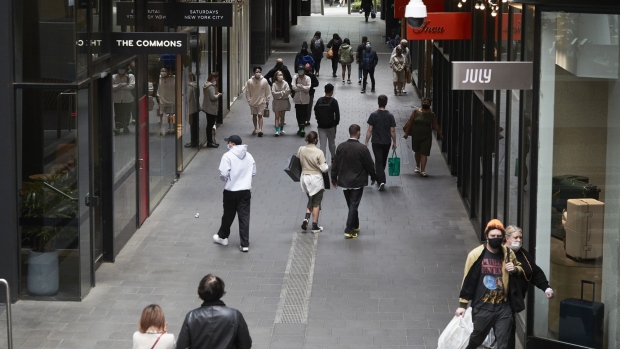Jan 24, 2022
Australia’s Core Inflation Accelerates Above RBA Target Midpoint
, Bloomberg News

(Bloomberg) -- Australia’s core consumer prices surpassed the midpoint of the Reserve Bank’s 2-3% target for the first time since June 2014, sending the currency higher as traders boosted bets on earlier interest-rate increases.
The annual trimmed mean gauge, a measure closely watched by RBA officials, advanced 2.6% in the final three months of 2021, exceeding economists’ estimates for a 2.3% gain, Australian Bureau of Statistics data showed Tuesday. On a quarterly basis, it rose 1% versus a forecast 0.7% gain.
The Australian dollar climbed to 71.66 U.S. cents at 11:35 a.m. in Sydney. Traders are now seeing a quarter percentage point rate increase by May.
“Fuel prices rose again in the December quarter, resulting in a record level for the CPI’s automotive fuel series for the second consecutive quarter,” said Michelle Marquardt, head of Prices Statistics at the ABS. “More broadly, global supply chain disruptions and material shortages, combined with rising freight costs and high demand, contributed to price increases across a wide range of goods.”
Accelerating core inflation suggests Australia is beginning to see similar price pressures to those that have driven the U.K. and New Zealand to begin raising interest rates and forced the Federal Reserve to bring forward its rate liftoff. A combination of supply chain disruptions and energy shortfalls are prompting earlier than expected tightening offshore.
Australia had been on the periphery of the global inflation story, allowing its central bank to remain dovish. That position could now start changing with the RBA board holding its first meeting of the year on Feb. 1.
Australia’s headline consumer price index advanced 3.5% in the fourth quarter from a year earlier, compared with economists’ estimates of a 3.2% gain, today’s data showed. On a quarterly basis, prices increased 1.3%, compared with 1% forecasts.
©2022 Bloomberg L.P.